Inside the Baptistery of Pad ua is preserved one of the masterpieces of Paduan painting from the second half of the 14th century. The realization of the pictorial decoration of the sacred building was entrusted to the Florentine painter Giusto de’ Menabuoi, who arrived in the Venetian city around 1370. He trained in Florence in the milieu of Maso di Banco, but around the middle of the century he began working in Visconti Milan, thus also coming into contact with the work of the Lombard Giottesque painters, influenced by Giovanni da Milano. The commission was given to him by Fina Buzzaccarina, wife of Francesco da Carrara the Elder, lord of Padua from 1350 to 1380 and a figure of great importance for culture in Padua: he was in fact a friend of Petrarch, who first came to the city in 1349, and it was he who gave the poet the land on which the house in which he retired to Arquà was built. This was Francis the Elder’s most important cultural friendship, but he maintained relations with all the leading men of culture in Padua at the time. Fina Buzzaccarina is remembered as a cultured and refined woman, and the commission for the Baptistery of Padua also allows us to understand that she was a woman well aware of her position and social prestige.
The Da Carrara family played a fundamental role in the cultural and artistic development of the Venetian city. For this sacred building, which together with the Cathedral overlooks today’s Piazza del Duomo, Fina had in mind to turn it into a place of power for the family, commissioning, in addition to the pictorial decoration, the creation of a tomb for herself and her husband, which was sculpted by Andriolo de’ Santi near the entrance at the time, so that anyone would have to pass underneath it to access the sacred space.
Currently, one enters the Baptistery through a portico, built at a time after the frescoes were completed. With the presence of these burials, in addition to its traditional liturgical function, the baptistery also availed itself of that of a mausoleum for the Carrarese family. Considering that the death of Fina Buzzaccarina occurred in 1378, the creation of these frescoes is indicated between 1375 and 1376 as being finished by the time the wife of the lord of Padua passed away. In her will, in fact, Fina gave careful descriptions of her possessions and precise provisions on the furnishings of the Baptistery, but there is no mention there of matters concerning the pictorial decoration. It is therefore possible to assume that Justus’ building site was already finished by the date of Fina’s death.
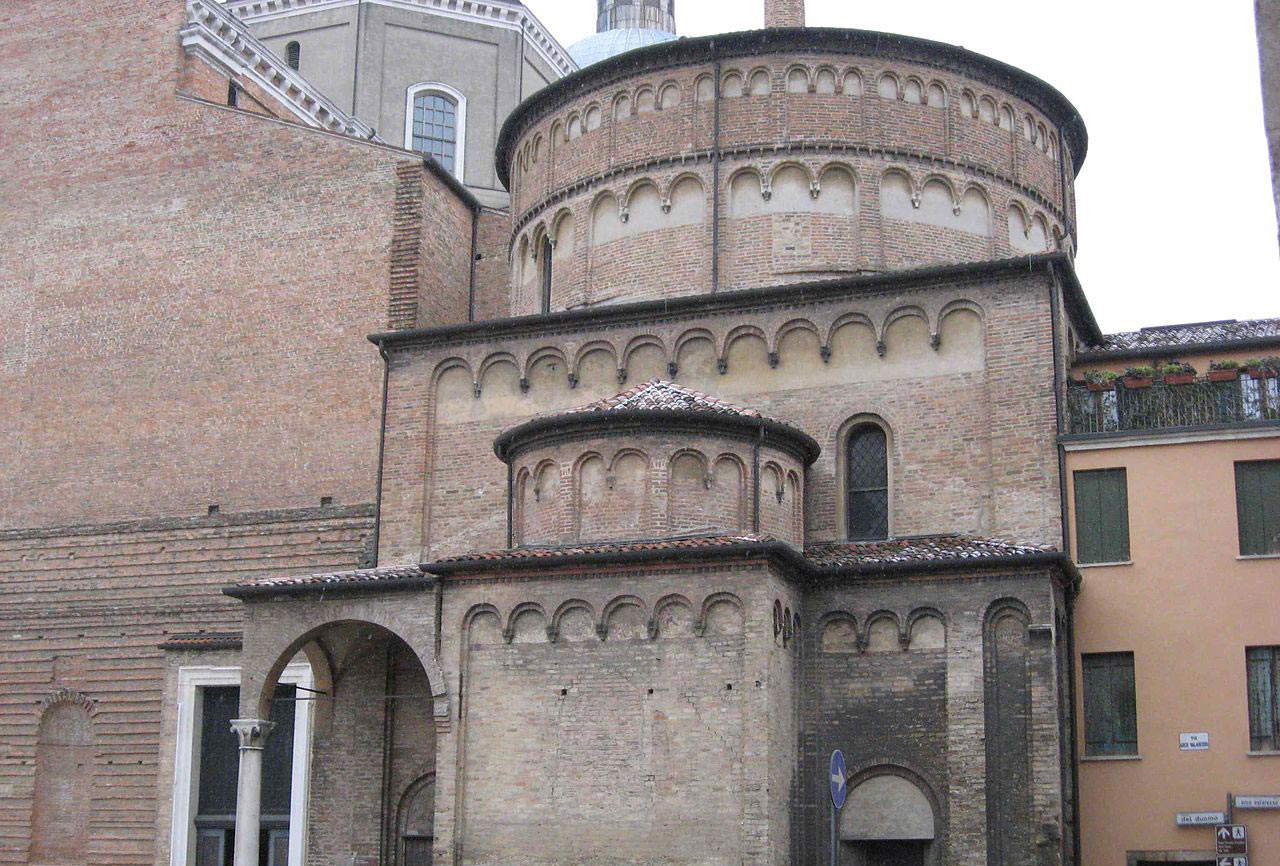
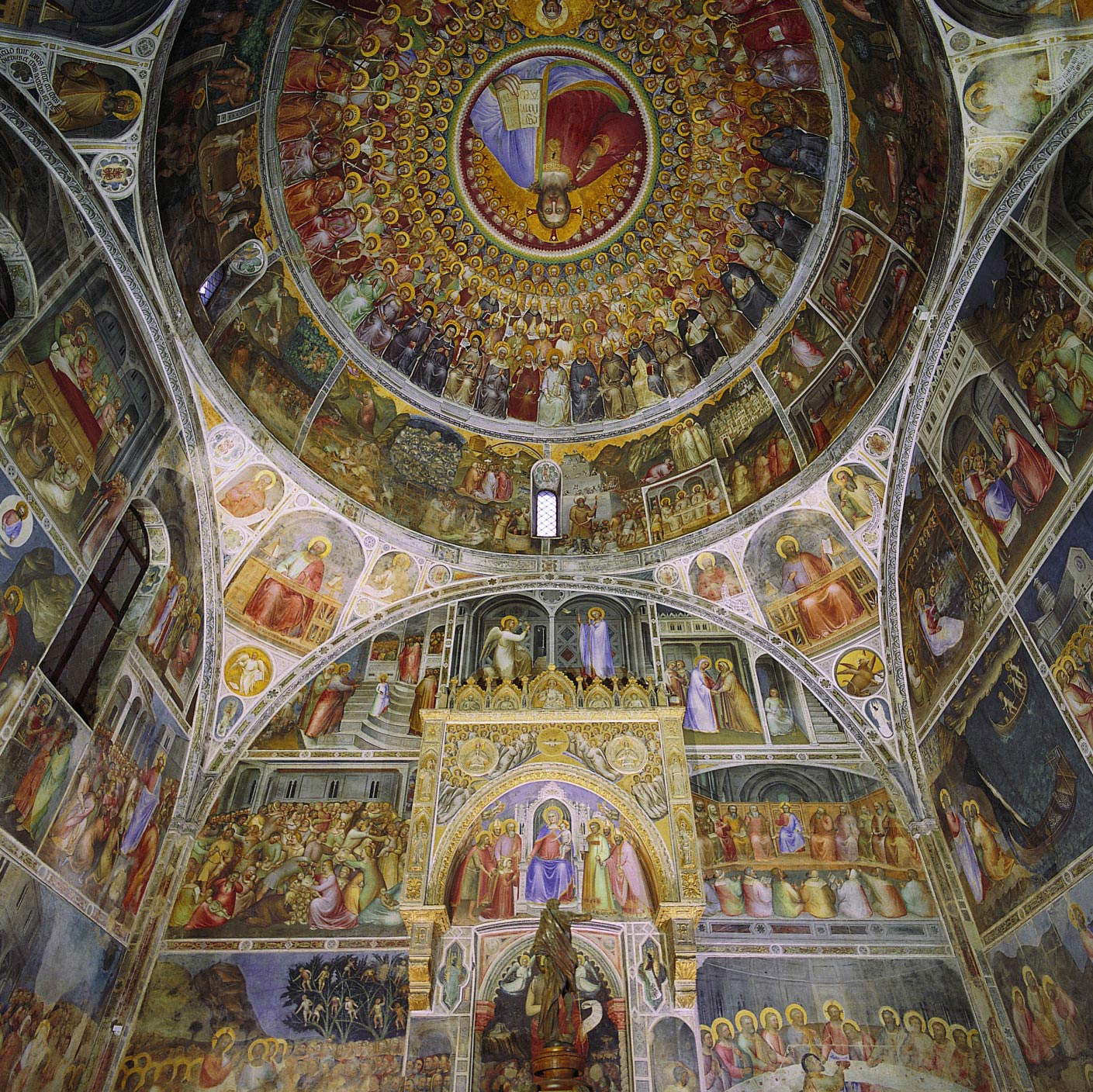
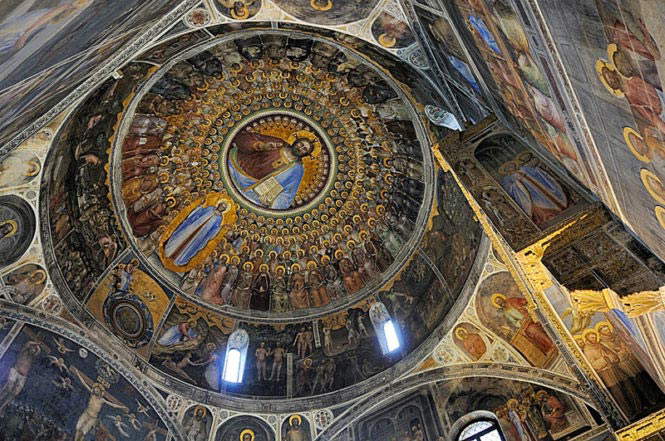
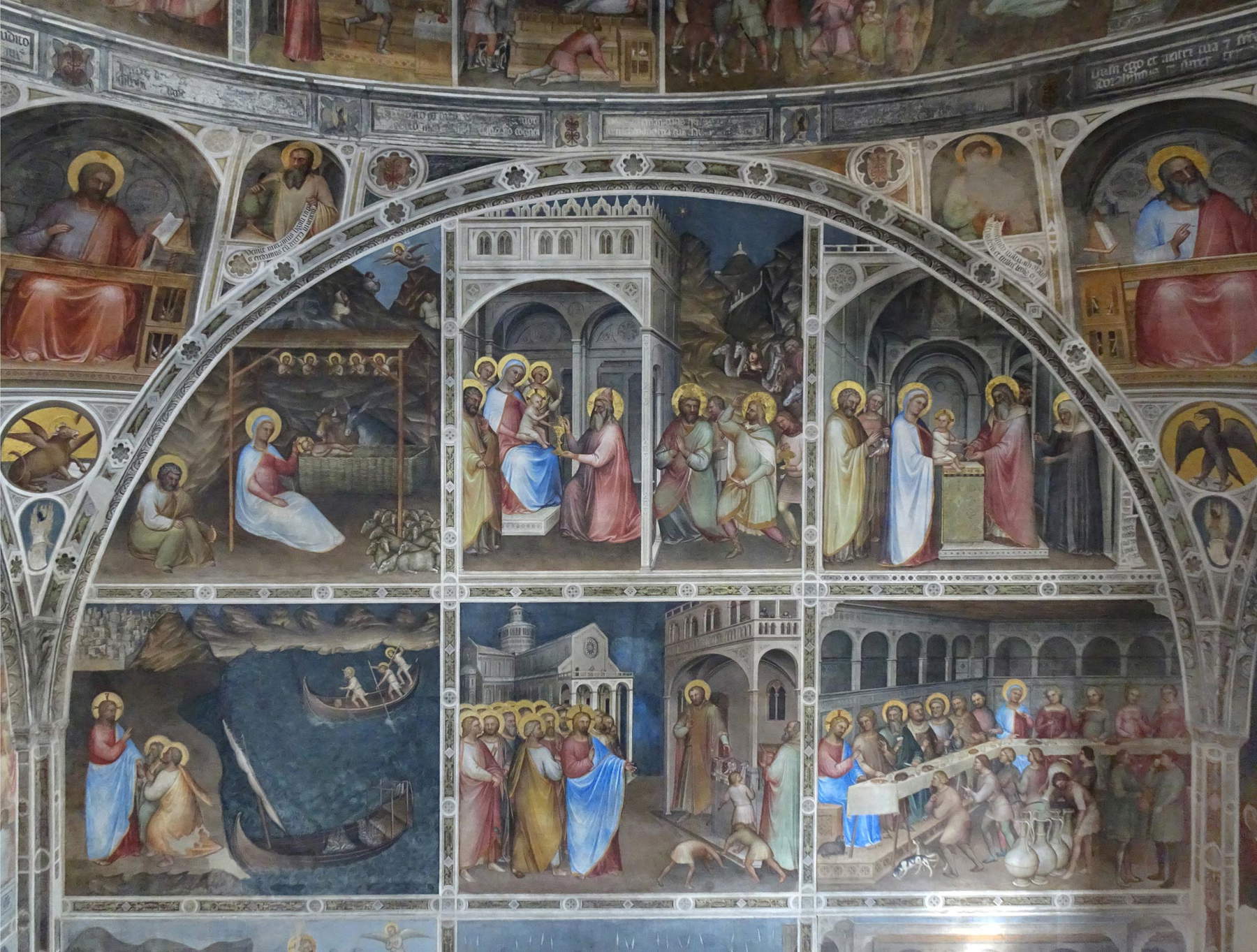
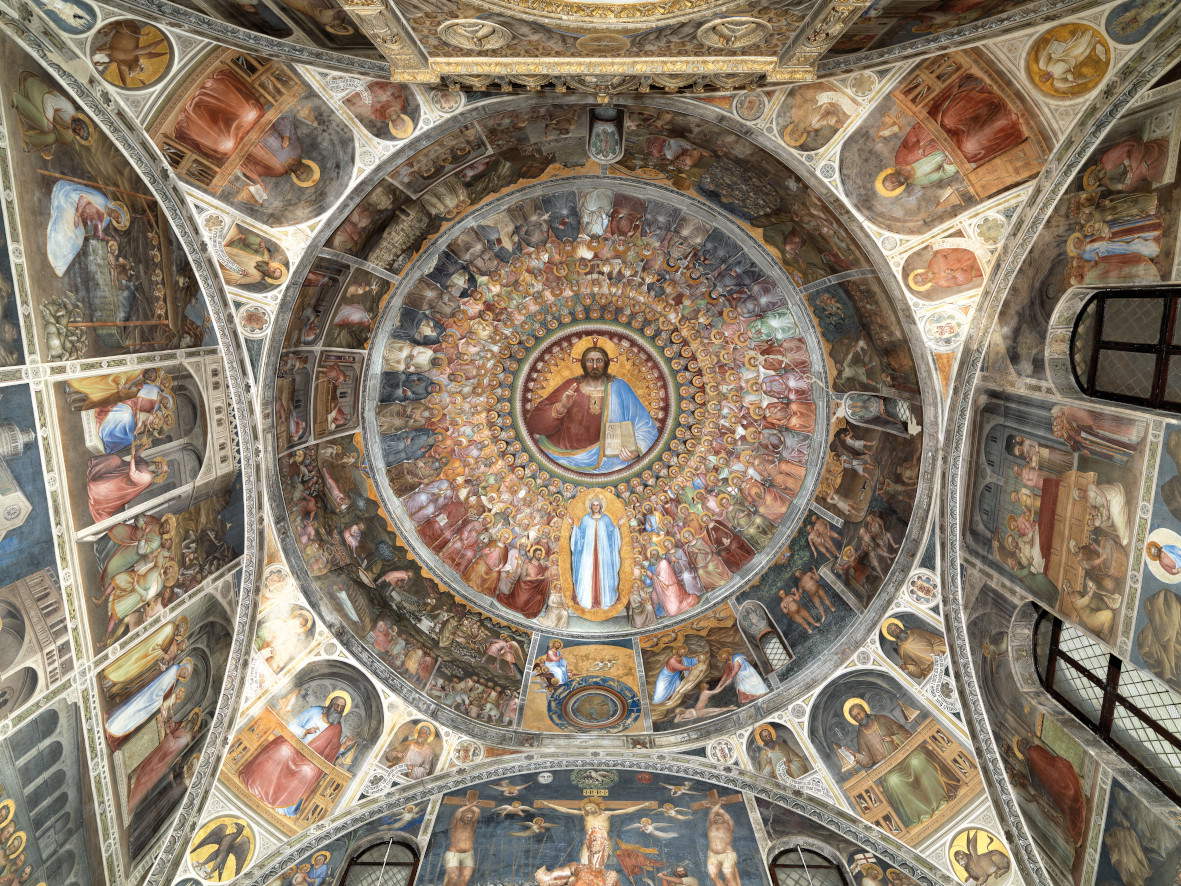
The frescoes of the Padua Baptistery are one of the masterpieces of the second half of the Italian 14th century. If you are not previously aware of what you will find inside the Baptistery, once you enter you are pervaded by a sense of awe, and even when you are already aware of the pictorial cycle guarded by that architecture, the wonder it inspires is great. The interior surface is completely frescoed. Stories of Mary, Christ and St. John the Baptist are depicted on the walls. A small chancel opens on the east wall, which is entirely decorated with forty-three episodes from theApocalypse: it is noteworthy that the scenes are placed within boxes numbered in progression so that the correct order of reading can be more easily identified. That of the Apocalypse is a truly extensive series, unmatched by other wall paintings of the medieval period. In the four pendentives are depicted the Four Evangelists with their respective symbols at their feet, together with the coat of arms of Francis the Elder; at the side of the evangelists are two prophets within two Carraresi coats of arms. Thirty-three episodes from the Book of Genesis unfold in the drum: here the iconography is reinforced by seventeen biblical passages in Latin. These scenes find fruitful comparison with the Old Testament cycle in the Basilica of San Marco in Venice.
In the dome, Justus paints Paradise. In the center, inscribed within the celestial iris, is depicted Christ Pantocrator surrounded by Seraphim. The figure of Christ expands into the available space with his firm bulk, occupying most of it: with his right hand he makes the blessing gesture, while with his left hand he holds the book of Holy Scripture bearing a passage from the last book of Revelation. Five concentric circles follow one another on the outside: the first two consist of the angelic choirs, while the next three consist of saints and holy men, identifiable either by their attributes or by a scroll between their hands. The outermost array of angels features an extensive repertoire of musical instruments of the period. Interrupting the array of angels and saints, positioned below the bust of the Son, is the figure of the Virgin enclosed within the gilded mandorla. The Virgin wears the crown and is depicted recovering the late antique pose of the Orante. The focus of this iconographic cycle is the Salvation Story, highlighted by the choice of aligning Christ Pantocrator, the Virgin, Creation, Crucifixion,Ascension, altar andRevelation. That of Justus’ Paradise is a mesmerizing image, in which the painter combines a depiction related to the hieraticity of Eastern images with a striking modern colorism. Theuse of color is one of the most fascinating aspects of this painter, who prefers to employ muted hues that are accentuated near the areas to be chiaroscuroed. It is mainly because of his use of light in a gradual manner that he is able to achieve these coloristic outcomes of great luminosity.
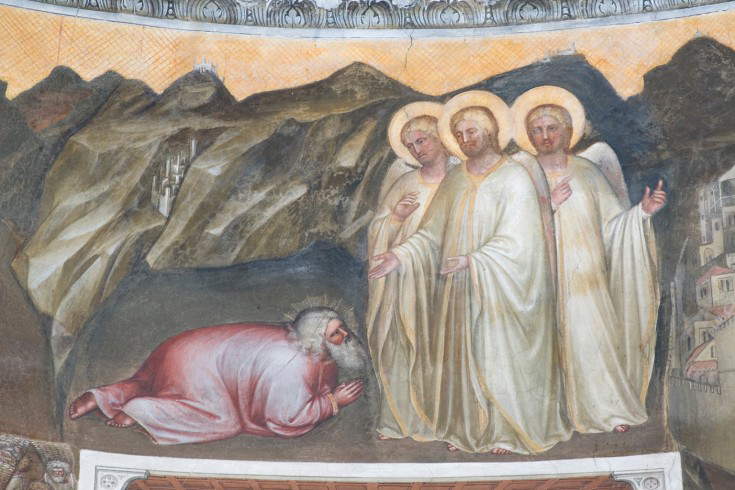
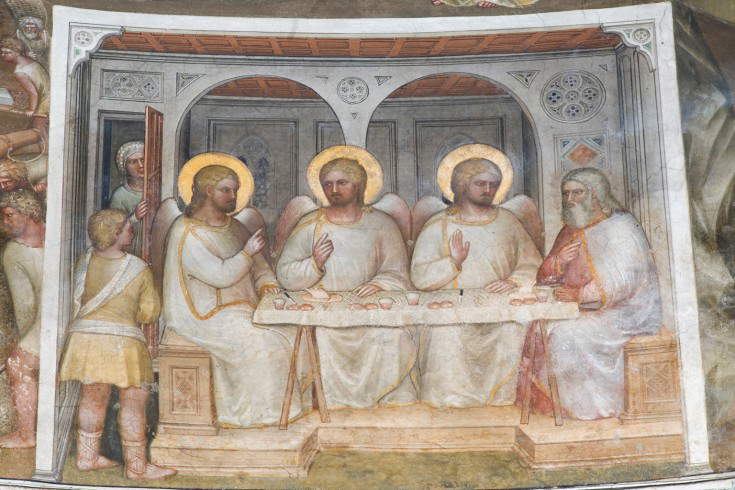
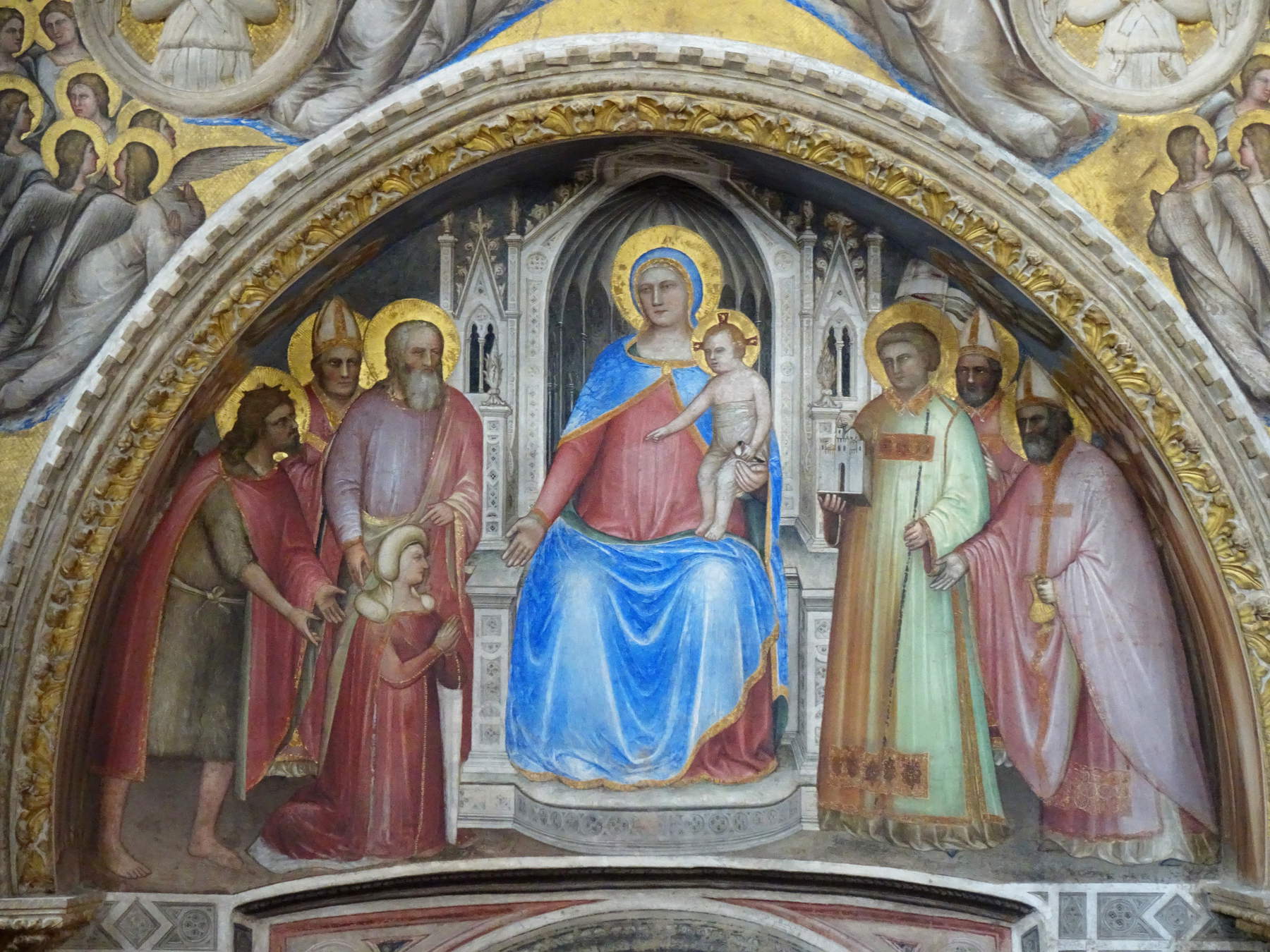
Observing this painted vault is like diving into a kaleidoscope. One should not be fooled by the hieraticity of the poses of Christ and the Virgin, because this depiction also features one of the peculiar aspects of Giusto’s painting, namely the representation according to the perspectiva naturalis. From Giotto onward this is one of the major fields of confrontation in fourteenth-century painting, and Justus succeeds in this instance in achieving results of excellence. One of the pieces in which this ability is best appreciated is in the Old Testament stories concerning Isaac. In the two scenes set inside Abraham’s room, a cabinet is depicted: in the first the doors are closed, while in the second they are ajar, allowing us to see that on the shelves inside a glass and a bottle have been placed after the meal, with a trompe-l’œil effect. This piece appears to be a stylistic exercise by the painter, demonstrating a desire to echo the perspective choretti depicted by Giotto in the Scrovegni Chapel and later by Taddeo Gaddi in the Baroncelli Chapel in the Basilica of Santa Croce in Florence.
Moreover, Giusto takes a further step: it is with the depiction of this ornamentation that the point of view of the scene is established. Precisely by virtue of the perspectiva naturalis, the size of the saints and angels in the vault decreases, following the depth of the dome. The spaces in which the Evangelists are proposed are also foreshortened from the bottom to the top. In some scenes, such as theAnnunciation, Giusto generously demonstrates his study of the proportions of the figures, which possess a firm volumetry and are distributed within the space according to a perspective consciousness, finding effective synthesis between form and color. At times this painter’s figures may seem almost simplified in their representation, but the quality of his painting is always very high. For example, in the Birth of St. John the Baptist Giusto depicts Fina and her daughters, characterizing them with very elegant robes and headdresses. This is not the only image of the Carrarese lady in this sacred space: she is also depicted in the lunette of the arcosolium where her tomb was located. Fina is included in the depiction of the Virgin Enthroned with Saints. The presence of Fina and her daughters was also found in other episodes of the story, but not only that: Giusto’s portraiture skills imprinted on the surface of the Baptistery the image of Petrarch.
The painter pays great attention to the relationship between real architecture and painted space, tackling the issue systematically: the result is the creation of an organic relationship between the two aspects. The frames of the scenes are modulated by light according to the effect the painter wishes to give them based on the areas of concavity of the wall, alternating areas of light and chiaroscuro.
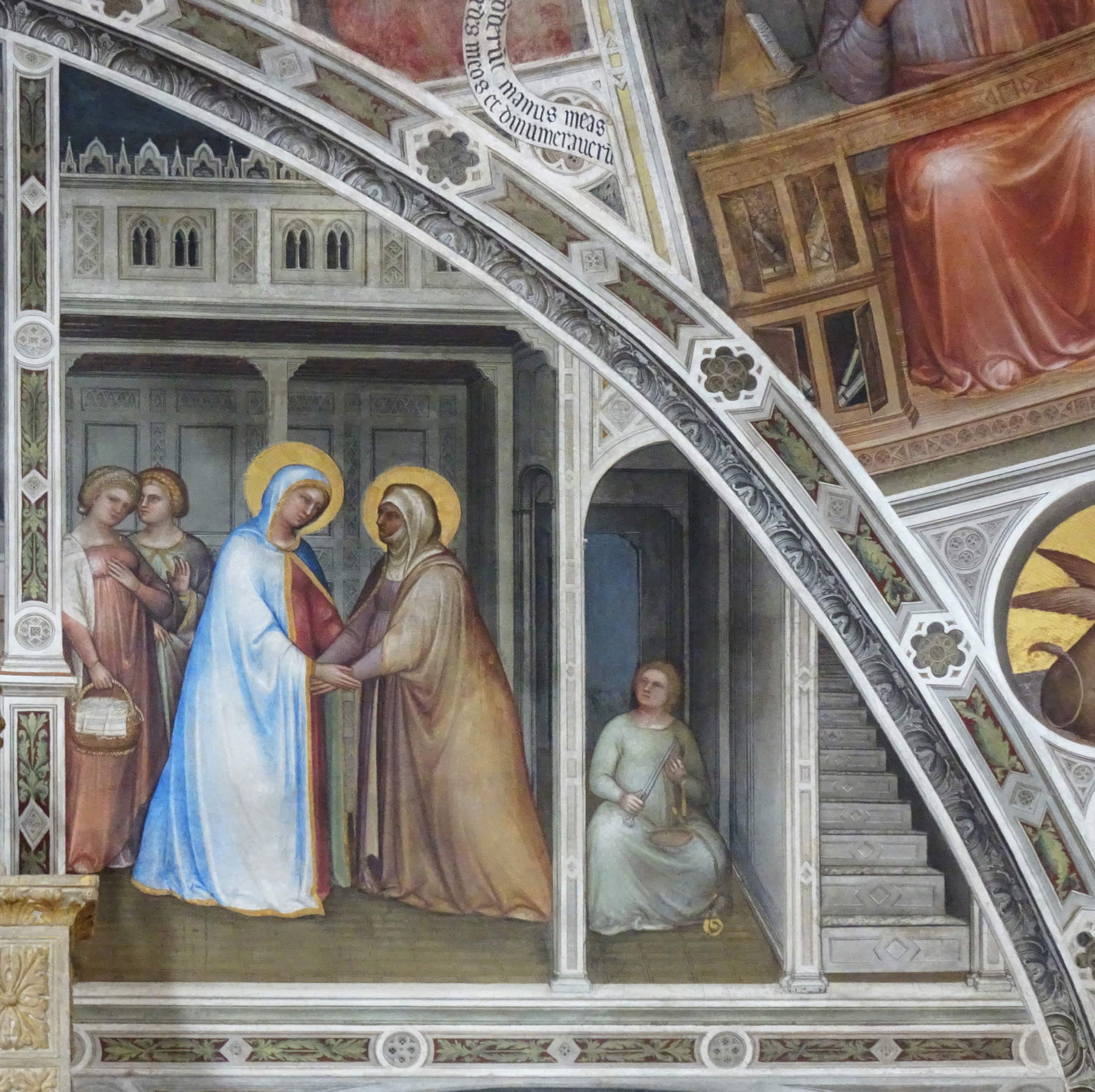


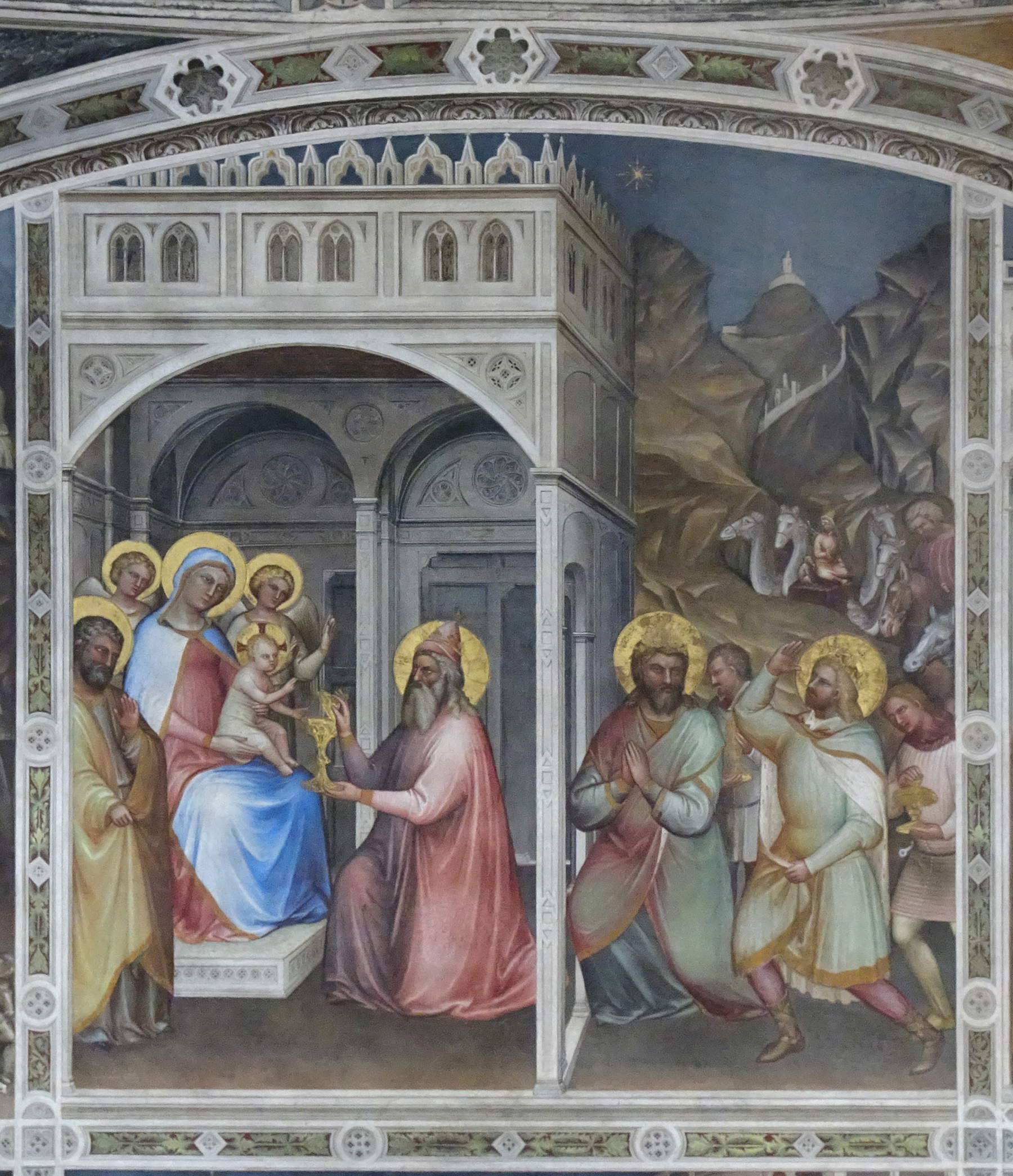
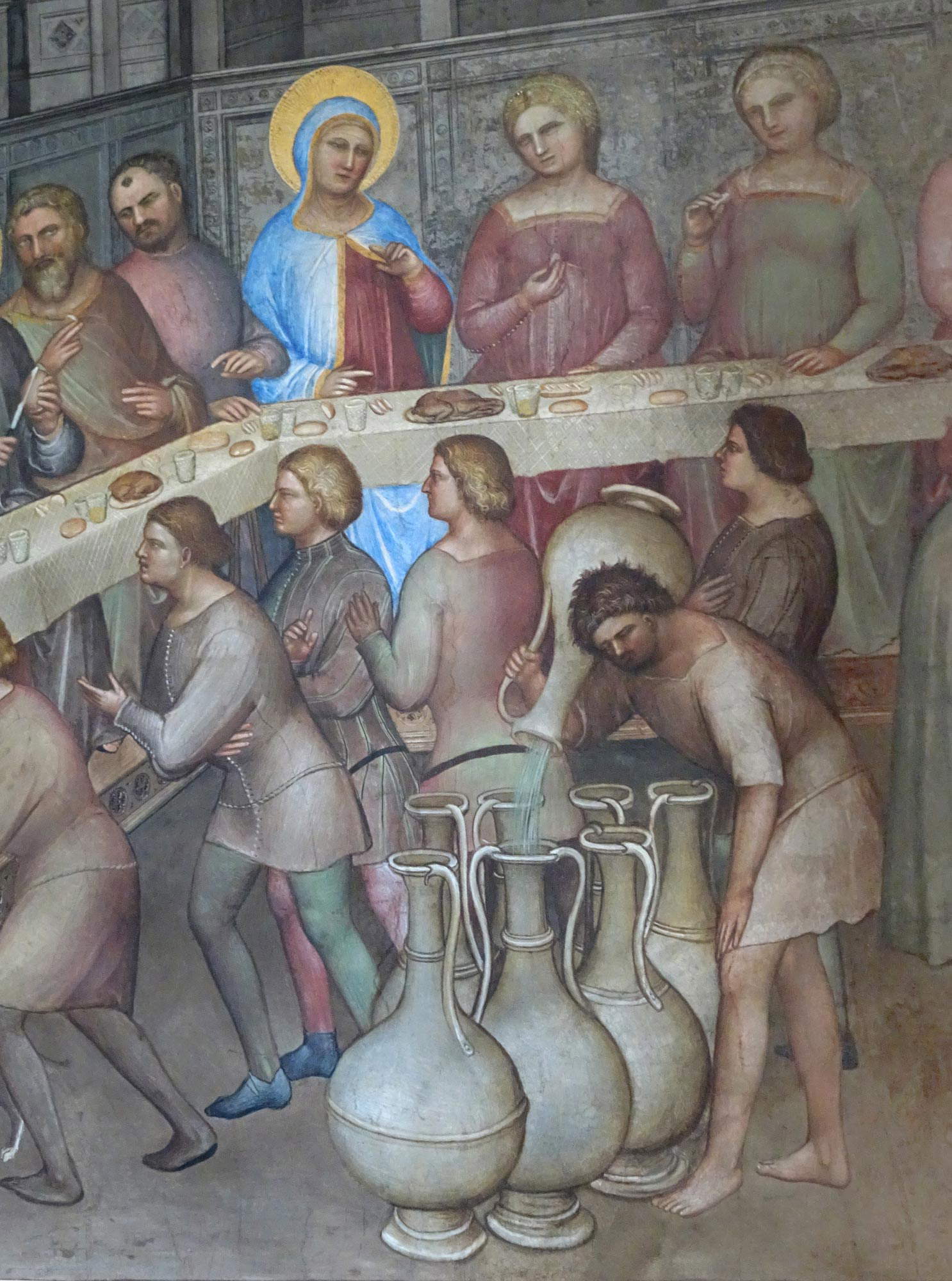
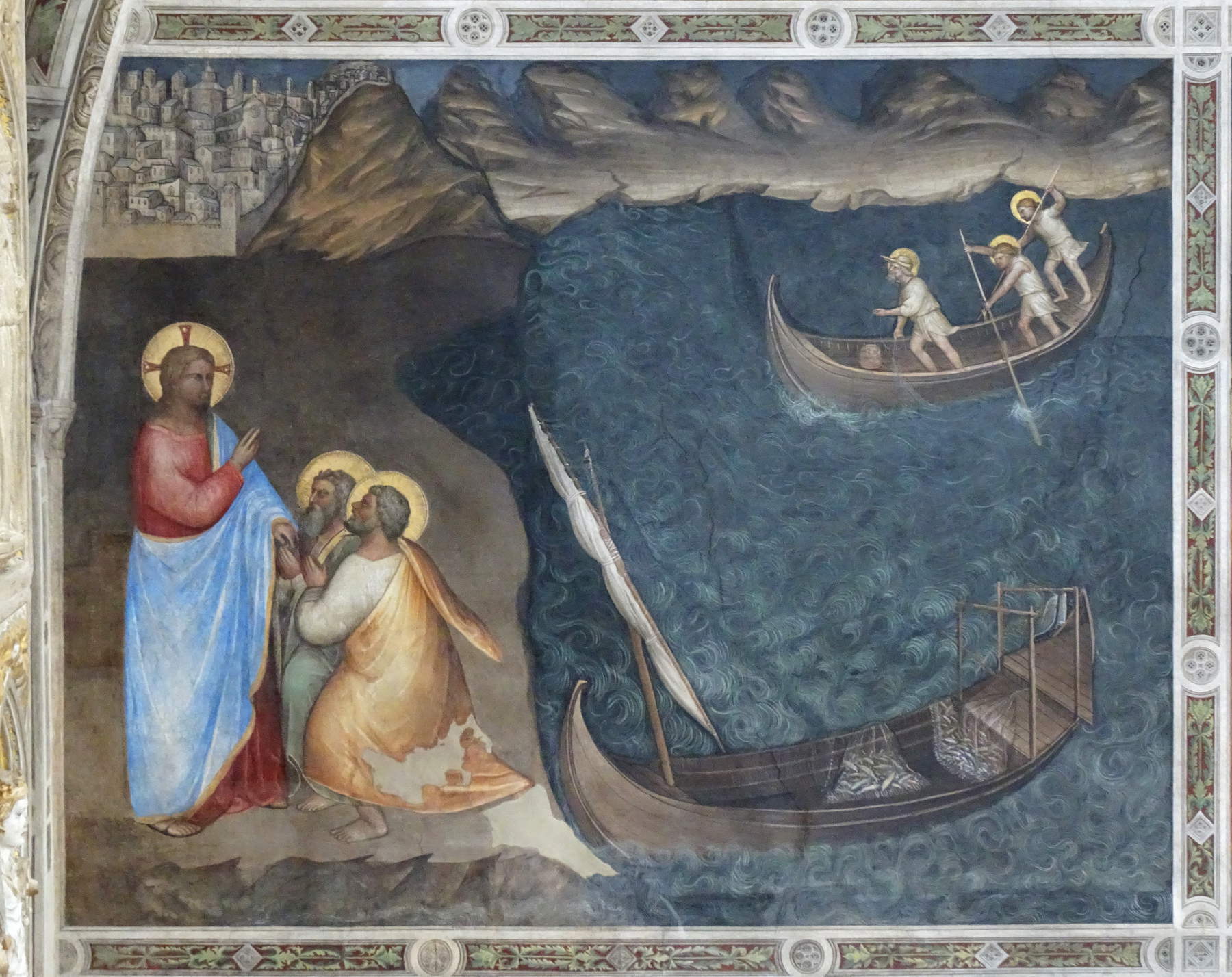
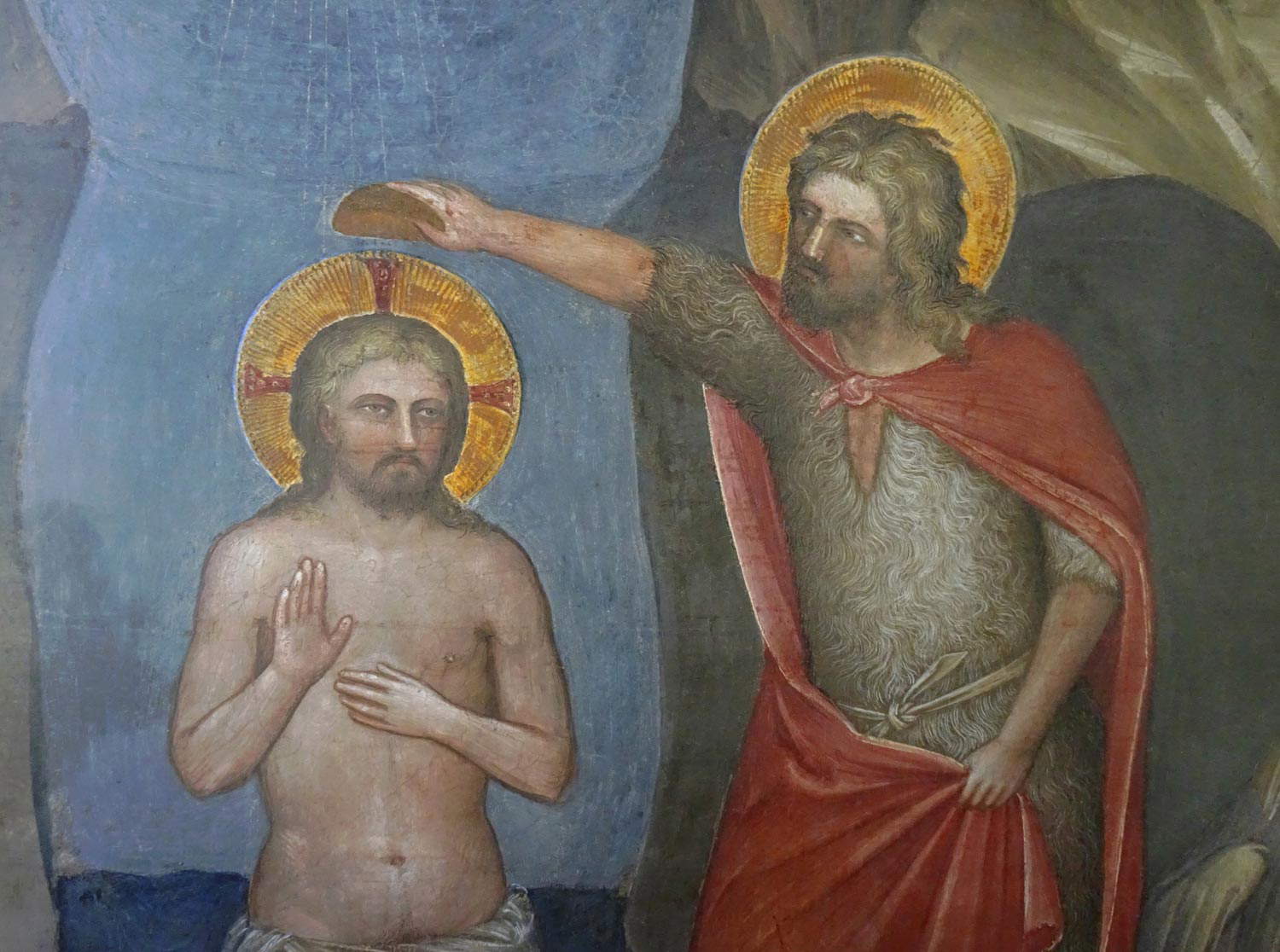
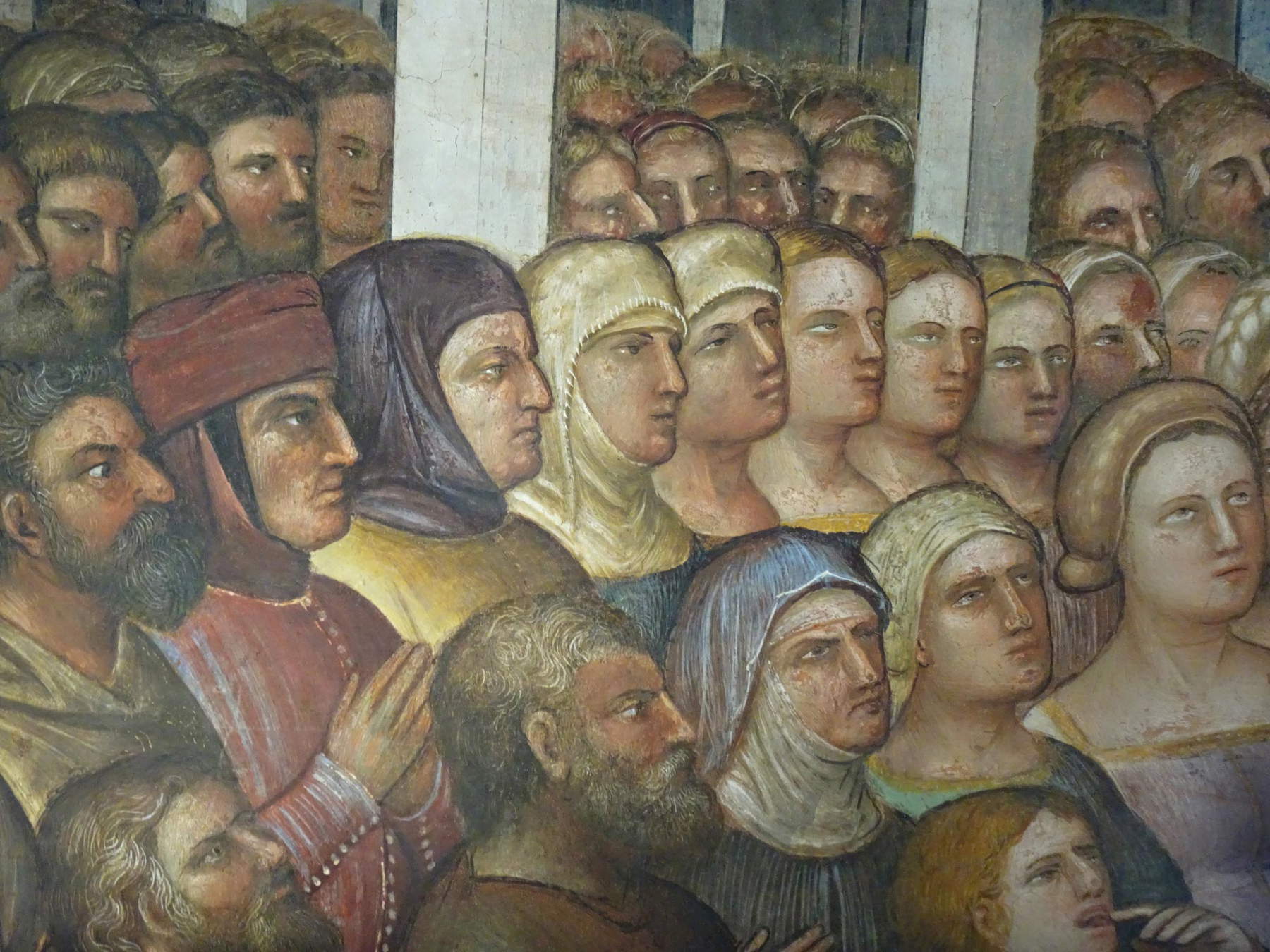
The attention to these optical and spatial aspects may have been supported by thecultural environment in which Giusto found himself working: in fact, in that period there were many scientific achievements involving the Studio Padovano. Although subsequent to Justus’ intervention in the Baptistery, it is significant to point out that between 1382 and 1385 Biagio Pelacani da Parma, whose teachings would also be of importance to Filippo Brunelleschi, taught in Padua. For this sacred space Giusto also made a polyptych depicting the Virgin and Child with Stories from the Life of St. John the Baptist, Stories from the Life of Christ, Saints and Doctors of the Church.
In general, the state of preservation of these frescoes is good, although water infiltration has created several problems over time, damaging the painting. The first restoration intervention dates back to 1806, when Antonio Ranieri Buzzaccarini asked Luca Brida to recover a situation that was quite compromised, as there were cracks in the masonry that had allowed water to infiltrate for a long time, causing lifting and falling of the pictorial surface. His intervention consisted of heavy repainting and use of wax to recompact the color. At the end of the 19th century the need for a new intervention was argued, but it was not carried out immediately. After World War I the most ruined frescoes were detached, and their repositioning took place in 1933. During World War II, precisely on March 22, 1944, the Paduan cathedral was bombed and the Baptistery was also damaged.
In 1947 a new restoration was entrusted to Mauro Pelliccioli to restore the damage. Moreover, on that occasion it was confirmed that the main reason for deterioration was moisture infiltration. Solutions were sought to restore the humidity problem: in 1963 a lead sheet was inserted in the wall to counteract capillary rise. With an intervention by Tintori, Rosa and Del Serra, some frescoes were detached. From 1973 to 1984 the Baptistery underwent a major restoration campaign: among other interventions, the heavy early 19th-century repainting was removed and the frescoes depicting the Last Supper and Christ among the Doctors were detached. A new diagnostic campaign in 2013 made it possible to monitor the state of conservation of the pictorial cycle. Restoration in 2022 renewed the splendor of these frescoes, which since 2021 have been part of the Unesco site Padua Urbs Picta-Giotto, the Scrovegni Chapel and the 14th-century pictorial cycles.
Warning: the translation into English of the original Italian article was created using automatic tools. We undertake to review all articles, but we do not guarantee the total absence of inaccuracies in the translation due to the program. You can find the original by clicking on the ITA button. If you find any mistake,please contact us.